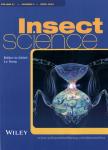Differential levels of mite infestation of wheat and barley in Czech grain stores
Differential levels of mite infestation of wheat and barley in Czech grain stores作者机构:Crop Research Institute Prague Czech Republic
出 版 物:《Insect Science》 (昆虫科学(英文版))
年 卷 期:2009年第16卷第3期
页 面:255-262页
核心收录:
学科分类:0710[理学-生物学] 0830[工学-环境科学与工程(可授工学、理学、农学学位)] 07[理学] 09[农学] 0904[农学-植物保护] 0901[农学-作物学] 071002[理学-动物学] 0713[理学-生态学]
基 金:the Ministry of Education Youth and Sport
主 题:barley food grain mite storage wheat
摘 要:While mites are able to utilize numerous food sources, the suitability of the food strongly influences population growth. The different suitabilities of various stored agricultural products will thus affect the level of infestation. In this study, we compared field mite infestation rates in two stored cereals: wheat and barley. We analyzed mite abundance, frequency and species composition in samples of grain obtained from 79 selected Czech grain stores. Stored barley seemed to be more vulnerable to mite attack than wheat, as we consistently found more infested samples, more species and higher mean and median mite abundance per sample in barley as compared to wheat. The mean mite abundance per sam- ple were 55 and 506 individuals for wheat and barley, respectively. In barley, 10% of sampies exceeded allergen risk threshold (i.e., 1 000 individuals per kg of grain). Altogether, 25 species were identified from approximately 35 000 individuals. The most frequently identified species were the same in wheat and barley, that is, Tydeus interruptus Sig Thor, Acarus siro L., Tarsonemus granarius Lindquist, Lepidoglyphus destructor (Schrank) and Tyrophagus putrescentiae (Schrank). Based on principal components analysis, we found a closer association of T. interruptus, T. putrescentiae, L. destructor and Cheyletus eruditus (Schrank) with barley samples, corresponding to the high frequency and abundance values of these mites. The probable reasons for the higher infestation, especially mite abundance in barley, are discussed in relation to the higher proportion of crushed parts, which may release favorable nutrient sources and amplify the abundance values.



